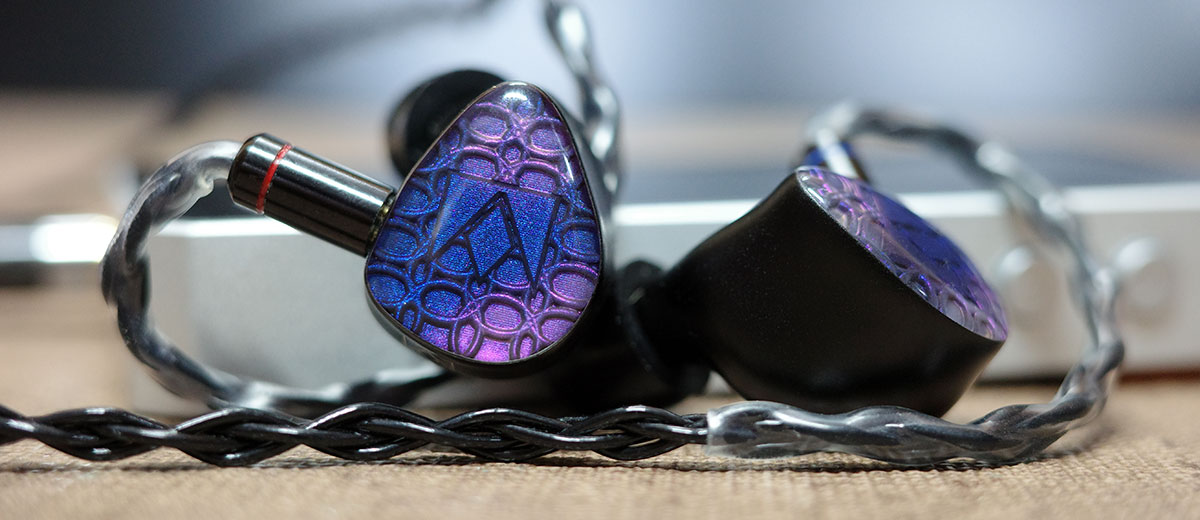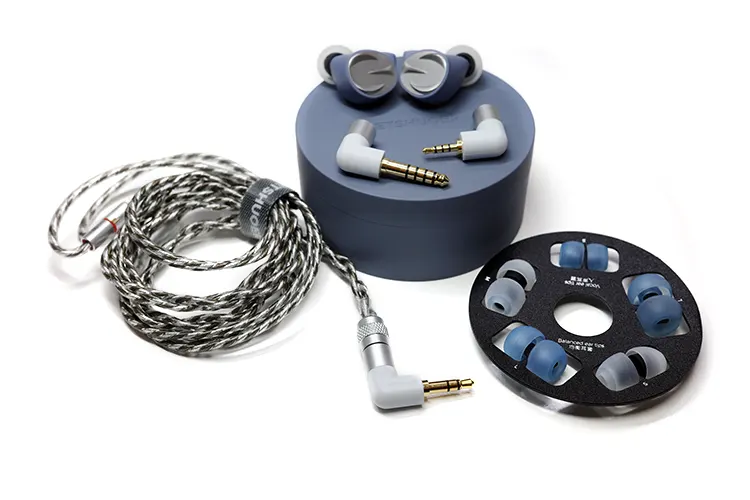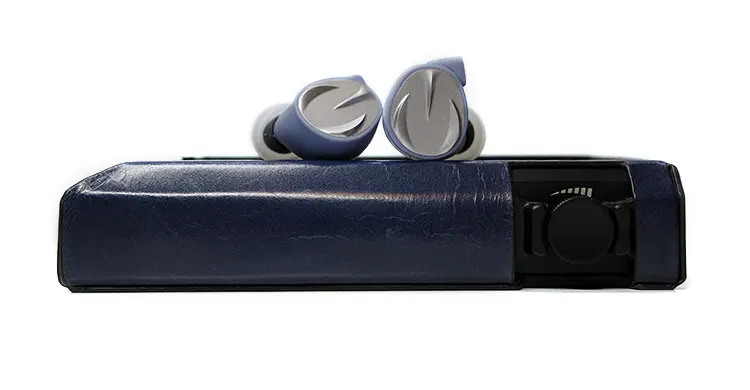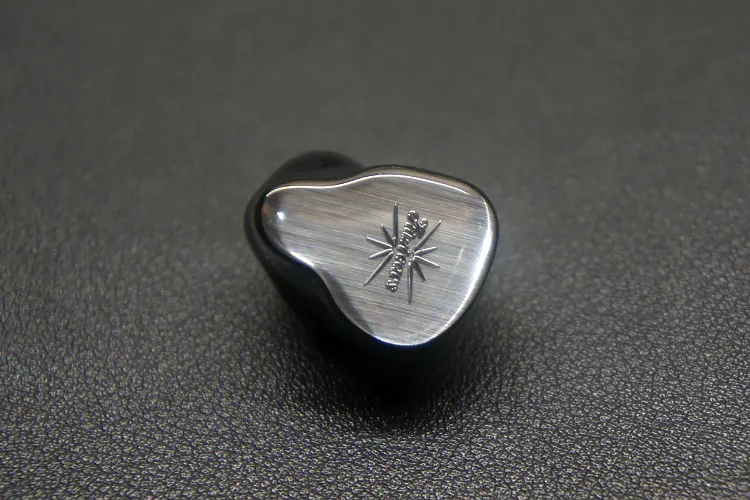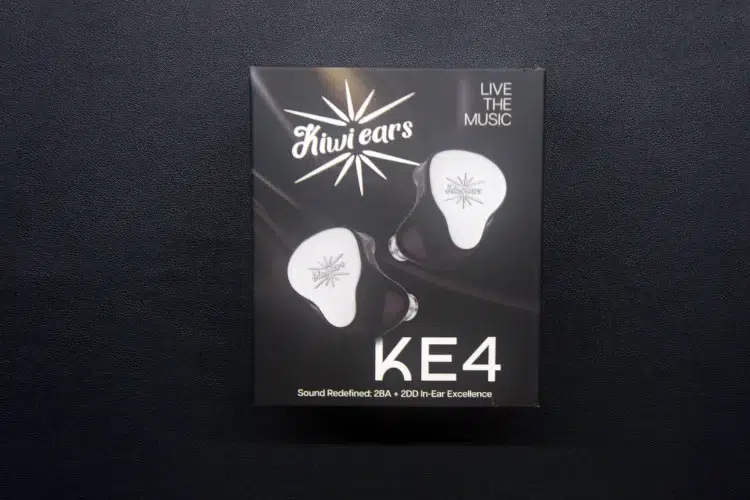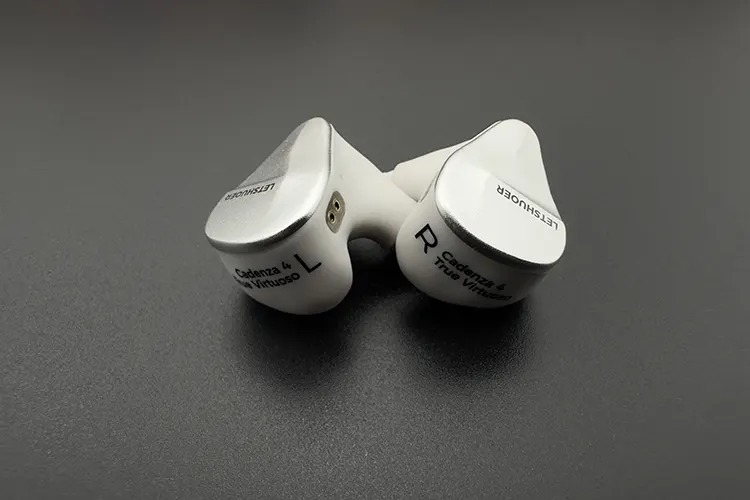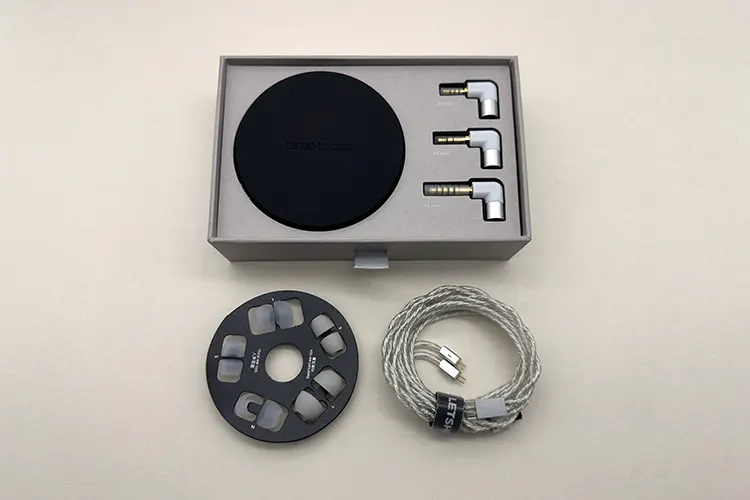Synergy
Efficiency
The Noble Audio Knight is eminently easy to drive. With an Impedance of 26 Ω, there is enough to make for a perfectly black background while making the Knight easy to drive.
I rarely had to raise the volume above 40 on the HiBy R4 to attain adequate listening levels. When called upon, though, the Knight can kick up to quite loud levels without too much trouble.
Pairings
The Noble Audio Knight paired very well with both the HiBy R4 and FiiO JM21.
The FiiO runs a bit cleaner in signature than the HiBy, promoting less on the low end but also not too thin. The detail retrieval came across better using the FiiO, but it was less immersive than the HiBy. I found myself going back and forth depending upon the genre of music being played.
For a more immersive effect, the HiBy R4 would be my choice, emoting a bit more expression to the music. For a more detailed, accurate response, the FiiO was the better choice.
What this shows is that the Knight can “work and play well with others,” quite nicely.
Select Comparisons
LETSHUOER S15
Features
Running the new 3rd generation 14.8mm planar driver, the S15 adds a proprietary 6mm R-Sonic filter inside, instead of the three drivers of the Knight.
LETSHUOER placed the R-Sonic inside, precisely placing it after the planar driver to optimize tuning, whereas the Noble allows each driver its own space.
The S15 is rated at 30Ω (vs 26Ω), with a sensitivity of 106 dB/mW, making for a fairly easy-to-drive unit, much like the Knight. The S15 comes with interchangeable jacks, unlike the 4.4mm only for the Knight.
Design
The S15 chassis is 3D-made from a resin (as opposed to the aluminum shell on the Knight), which looks quite good in the blue provided. While it does feel plasticky, the tactility is very good. Of the two, the Knight has a more upscale look to it.
There are two vent holes on the inside, and one on the back, allowing for some flexibility in bass response, as opposed to the singular vent hole on the Noble. The faceplate mimics the company logo and is made out of anodized aluminum.
The matte/semi-gloss aesthetic is understated and elegant. Complimenting the silver of the 2-pin insertion, the faceplate ties the two together. Where the S15 looks understated, the Knight comes across as more upscale in look and feel.
The S15 is average in size, and I had no issues wearing the unit for long periods, much like the Knight with its slightly shorter nozzles.
The 0.78mm 2-pin connection is a bit hard to fully mount, but with careful force, the 2-pins are inserted completely. I would have liked a bit less pressure for inserting the 2-pin into the shell, but I can say that I have never bent quality 2-pins such as these. The Noble, on the other hand, was just right.
Performance
The S15 allowed for a bit of rumble down low, much like the Knight, with an even tonality to it, coming across as mature but on the slower side.
The control of the low end comes across better on the Knight. Good details emanate from the midrange, though, providing an airiness that allows for good spatial representation, countering the slow decay of the bass notes.
There is a more open airiness to the S15 than the Knight, but with a bit of a thinner tone to it, along with a less immersive effect.
This also adds good texture to the notes since the punctuality from those mids carries into the treble region, giving songs good clarity, but slightly different than the Knight. Where the S15 has a bit more accuracy, the Knight comes across with better resolution.
There is not too much bite up top either, making for that overall maturity in the signature. Resolution remains very good, despite the somewhat smooth signature, due to the excellent midrange.
Kiwi Ears KE4
Features
The bass is handled by dual dynamic drivers in the KE4, while the midrange and lower treble use a customized RAB-32257 balanced armature driver.
A Knowles RAD-33518 balanced armature driver covers the upper treble region, rounding out the four drivers per side as opposed to the three on the Knight. Both are easy to drive, similarly promoting an organic signature.
Design
The large black shells carry a silver faceplate on the back, along with a nib on the inside. There is also a grated vent hole for the dual dynamic drivers, which you could theoretically apply to the nozzle filters.
Since four are included, you could vary the amount of bass by covering the vent hole, the nozzle, or both. The Knight has a single vent hole to go along with its aluminum shell and acrylic 3D faceplate.
I found the fit to be a tad big for my ears and the nib to be a bit big as well. I would have preferred a smaller nib, which I believe could have countered the larger size and pressure I felt when wearing it for long sessions. The Knight, on the other hand, could be worn for long sessions without bother and with an excellent fit.
The 2-pin connection is tight, and one must take care when connecting the cables, but once done, microphonics are nonexistent, and isolation was excellent using the included medium tips.
I found no driver flex upon inserting either, as some have noted in their reviews. I would again have preferred a slightly easier fit to the 2-pin insertion, but I never felt like it would bend.
The molded resin shells, combined with the flexible, pliable cable, make for an understated IEM that could belie what follows. Where the Knight looks and feels more upscale, the KE4 feels a bit budget until you listen to it.
Performance
Tip choice plays a part in the signature, much like the Knight, but the KE4’s signature is not neutral to me. I find the good bass qualities do bleed into the lower mids, which can either enhance or hinder your experience, whether you like that or not.
Where the Knight ties the lows and mids together, the KE4 is a bit more bipolar depending upon the music.
To me, the mids are the star, and the bass bleed hinders this slightly. Where the Knight ties both together neatly, the KE4 forces the low and mids together in a less coherent manner.
Treble extension is similar, but better quality on the Knight. Where the KE4 can reach a bit further, it is a bit less controlled. The melding of the Knight may have a positive effect here, where the individuality of the KE4 might be its forte.
LETSHUOER Cadenza4
Features
The Cadenza4 is a hybrid universal in-ear monitor using a 10mm dual-chambered beryllium-coated dynamic driver and 3 BA drivers, instead of the three driver type Knight.
The proprietary dynamic driver exhibits the qualities of being lightweight and exceptionally rigid. You get a mix of BA drivers, 1 from Sonion and 2 from Knowles, sharing a Sonion for the midrange with the Knight.
The Cadenza4 has an impedance of 15Ω @1kHz and a sensitivity rating of 102 db/Vrms, making it easier to drive than the Knight.
Design
The shells of the Cadenza4 are built in 3D-printed resin with a standard-sized nozzle extension similar to the S15.
The faceplate is built in CNC-machined aluminum alloy and is colored in shiny silver with a matte white finish to the shell. There is more individual character (and quality) to the Noble Audio Knight across the board.
The shells are small and lightweight, yet the whole construction feels quite robust. The fit is better to me than the S15 and on par with the Knight.
Performance
The Cadenza4 has a neutral profile with a hint of warmth than the Knight. Its sound remains largely uncolored, with less personality than the Knight, too.
This is more of a reference tuning that is not overly analytical. This sound prioritizes musicality over analytical precision. In that regard, both are similar
There is a very decent bass profile, presenting more on the quality side than the quantity. It is more of a neutral bass with some good sub-bass boost, and I find the Knight promotes a more cohesive low end as well as ties together with the midrange.
The lower mids remain neutral and do not have enough weight or body compared to the Knight. There is also a hint of thinning in the lower mids, so it might not work for people looking for a lush midrange.
Vocals are rendered with good texture but are not quite rich and lack weight. The Knight presents a more frontal aspect to vocals, with excellent spatial representation, though.
The treble on the Cadenza 4 has a smooth character. There is minimal harshness or excessive brightness in the treble region. There is also an absence of brilliance and sparkle, with a lack of airiness.
Where the Knight can reach a bit higher, it also does so without becoming brittle or with too much sparkle.
My Verdict
The Noble Audio Knight presents a very competitive sound at this price point. You get a three-driver setup in an ergonomic design that is not only comfortable for long periods but also stylish.
The high performance emanating from within satiates one’s need at an affordable level when all is combined. The bass and midrange stand out as highlights, but its overall sonic balance combines with intricate detailing to make a compelling argument for an outstanding option.
While a dedicated case would have been a nice inclusion, the velour string bag functions as you expect while taking up less space. The additional case for the tips is a positive yes, but combined with the string bag makes for a cumbersome package, somewhat.
The Knight is also a bit source-sensitive, taking on the characteristics of the incoming sound, which may be a good or bad thing depending upon how you look at it. The versatility cannot be denied, though.
For those seeking an IEM that offers both an outstanding look and the substance to back it up, the Knight is a great investment. Noble Audio shows that entry-level does not necessarily mean compromising on sound quality.
Noble Audio Knight Technical Specifications
- 10mm Dynamic Driver
- 1 Sonion BA
- 1 Piezo Super Tweeter
- 8 Strand woven OFC silver-plated cable
- 4mm balanced cable, 0.78mm 2-pin connection
- Machined Aluminum frame with custom Noble faceplate
- Custom ear tip case and cleaning tool
- Frequency Response: 20Hz – 20kHz
- Impedance: 26 Ω

